The Piambura™ Story
The History and Development of Piambura™ (aka Piombura™)
Piambura is a visually stunning technique created by the contemporary naturalist painter Adrian Gottlieb. He describes it as how a realist does impressionism -- not with loose brush strokes that require you to stand at a distance to appreciate, but with reduced paint that still allows you to appreciate the precision of detail inherent in realist painting. In Gottlieb’s own words, “A piambura captures the soul of the subject and the luminosity of the moment by reducing paint to its essence.”
Gottlieb coined the word piambura from the two Italian words: piombo and imprimatura. Piombo is the Italian word for “lead”, which in this case refers to the lead white paint used to impart luminescence to the finished pimabura. “Ura” is actually the last part of “imprimatura,” which refers to the earth toned stain that allows light falling onto the painting to reflect back through the paint layers, again imparting luminosity to the finished painting. Thus, piambura refers to the two primary colors used in creating the painting – which also happen to be the two colors that impart double luminosity to it. To make the word easier to read and pronounce, Gottlieb simply switched the “o” in piombo to an “a.” Thus: “piambura.”
The technique itself is an outgrowth of the basic mixture of green, red and white, pigments used to create the cool underpainting, or imprimatura, used in the verdaccio technique pioneered by the Italian fresco painters of the early Renaissance. Even back then, artists would sometimes leave parts of their frescoes in their raw verdaccio state, with no overpainting.
The first time Gottlieb decided to create a finished portrait with no overpainting was during his commission to paint the official portrait of William Herbert, 18th Earl Pembroke, 15th Earl Montgomery. This larger than life size portrait required Gottlieb to live on the Earl’s estate for three months and also included a request at the end that he do a quick painting of the Earl’s girlfriend (now wife and the 18th Countess of Pembroke), Victoria (Tori) Bullough. Not wanting to do a hurried full painting with unrefined brush strokes, Gottlieb opted to do a more polished/finished underpainting of her. The result was the first prototype of a pimabura...a pre-piambura, if you will.
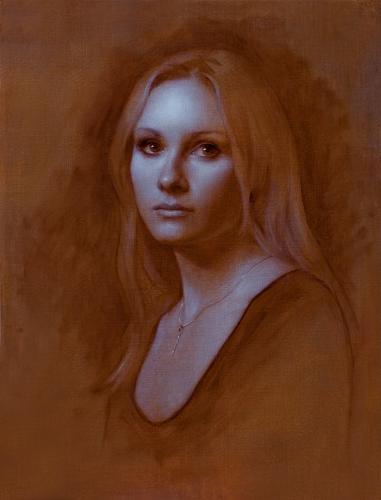 |
Prototype Piambura |
The portrait is extraordinarily beautiful and provides a hint of what was to come as Gottlieb continued to refine his technique.
Over the next couple of years, as Gottlieb began to process the response to “Tori,” which was extraordinarily enthusiastic, he began to realize that there was a real technique that could be developed out of it – a way to quickly capture the soul of a subject, not with loose brush strokes that require you to stand at a distance to appreciate, but with reduced paint that still allows you to appreciate the precision of detail inherent in realist painting. He saw that it actually might be possible, using this technique, to capture the luminosity of the moment. As we track several of his piamburas, we can see the evolution of the technique from its prototype in “Tori” as the pimaburas get steadily more refined and more luminous.
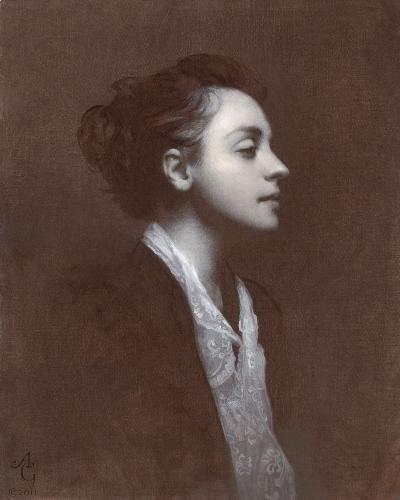 |
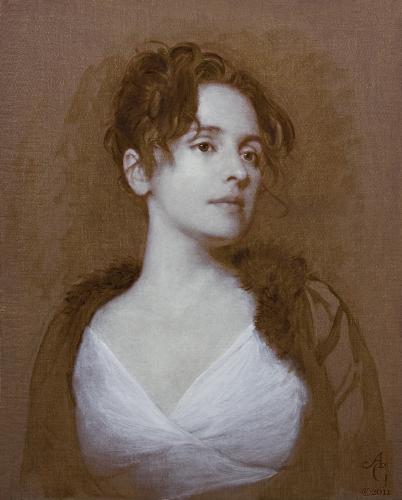 |
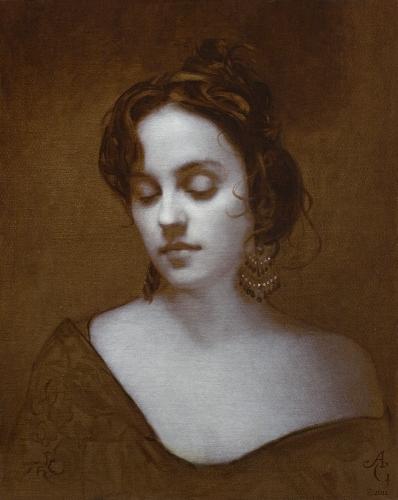 |
Heather #1 - Piambura |
Heather #2 - Piambura |
Heather #4 - Piambura |
In its current perfected form, the piambura has truly realized Gottlieb’s initial vision: “to capture the soul of the subject and the luminosity of the moment by reducing paint to its core essence. “
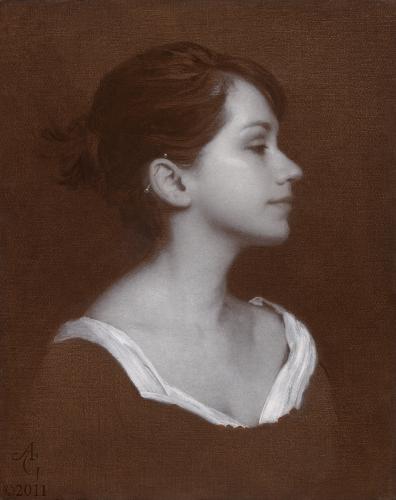 |
Dani - Piambura |
.
For more on Adrian Gottlieb, go to:
-
Southwest Art Magazine on Adrian Gottlieb
-
S.R. Brennen Galleries in Palm Desert, CA and Scottsdale, AZ